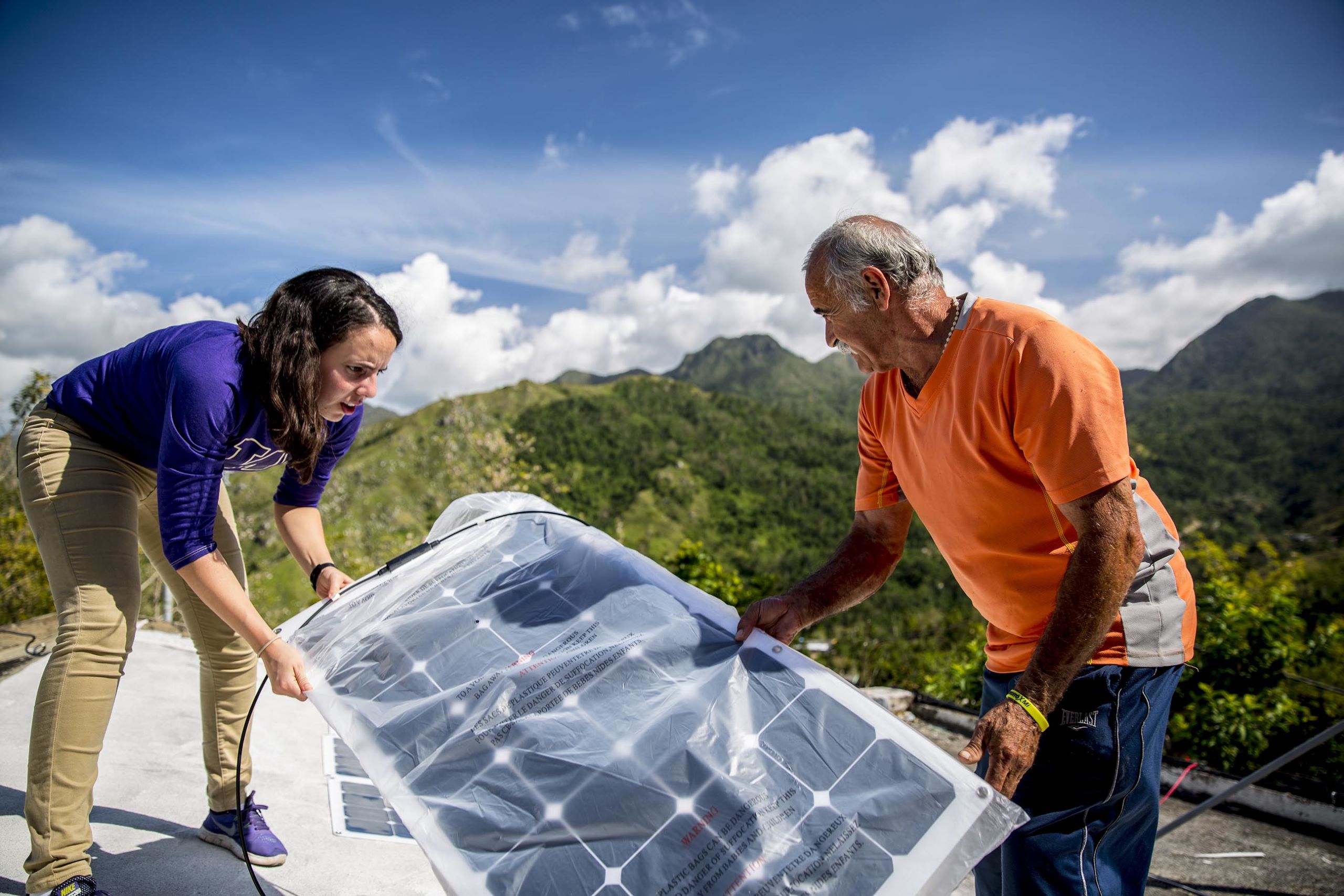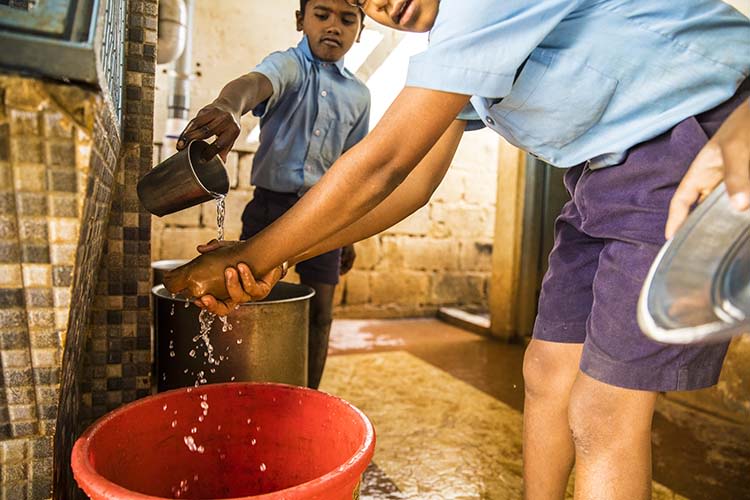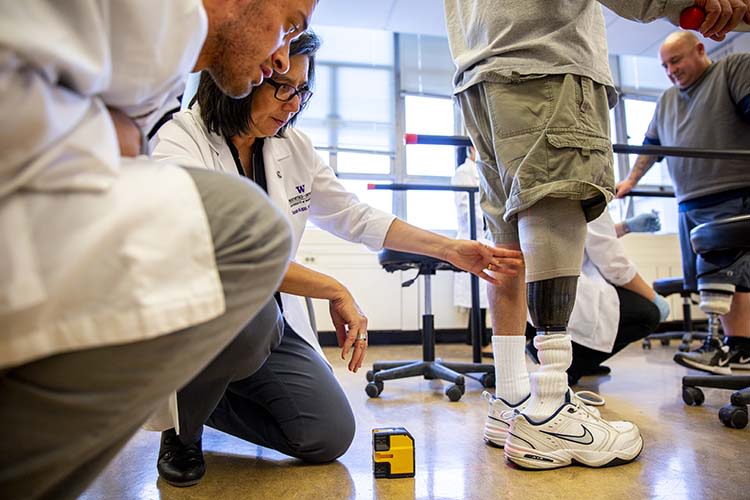Here, There and Everywhere
Through its Population Health Initiative, the University of Washington is working to make life better for people the world over.

As scores of laboratories around the world race to find a vaccine for COVID-19, a few—including two at the University of Washington—are thinking further into the future. One is already reporting positive results for their vaccine candidate, and the second is focusing on how to rapidly develop vaccines for future pandemics.
The critical vaccine work of Deborah Fuller’s and James Mullins’ labs is funded in part by the UW’s Population Health Initiative. It’s one of 53 grants to date funding COVID-19 response research across the University. It’s also a component of the University’s work to marry its resources and expertise with those of partners in Seattle and around the world to improve health and quality of life for people everywhere.
The work of population health requires complex cross-disciplinary efforts—from policy and law to scientific research and the practice of medicine. The focus is not only on the here and now but on the challenges ahead. Global challenges like disease, climate change and clean drinking water, as well as national issues such as gun violence, a flawed criminal-justice system and an expensive and ineffective health-care system, all disproportionally harm vulnerable people and work against building and supporting healthy populations.
In 2016, President Ana Mari Cauce magnified the UW’s work in the spaces of health, equity and the environment with the Population Health Initiative. She placed interdisciplinary collaborations at the heart of a 25-year project to expand the University’s ability to turn research and practice into policy, interventions and innovations. Today, core funding from the UW and private philanthropy promotes these collaborations and fosters research and community outreach in the Pacific Northwest, across the country and throughout the world.
“As humans, we all share a yearning for a better life, and we now have the opportunity and responsibility to contribute to healthy, productive lives for everyone,” says Cauce. “Our students, whether they study business or social work, international relations or medicine, will have a tremendous impact on the world. This is the right time and the right place.”
The University-wide Population Health Initiative helps bring in faculty with a population health focus to collaborate across a variety of fields. It also funds student fellowships and provides early funding to a relevant projects. As a major research university in the Puget Sound region, the UW is at the nexus of education, science, medicine, innovation and philanthropy, ideally placed to do the work of population health. The Bill & Melinda Gates Foundation, headquartered in Seattle, leads the world in addressing global health challenges. And more than 260 other Washington-based nonprofits, organizations and businesses focus on global health.
“Population health is a broader perspective than we often think about when we think about health and medicine,” says Chris Elias, a 1990 UW graduate and president of the Gates Foundation’s Global Development Program. “It’s about bringing in the understanding of populations, what makes them healthy, what puts them at risk, and then taking steps, some of which happen in the clinic but many of which happen outside a clinic setting.”
Ali Mokdad, a professor of health metrics sciences at the UW’s Institute for Health Metrics and Evaluation (IHME), leads the initiative. He came to the UW in 2009 after more than a decade as a senior epidemiologist and branch chief at the CDC. “All of the issues we are facing start at home, start in our own communities,” Mokdad says. “And they are not health-related only. They are food-related, job-related, housing-related, and unless we deal with them, we are not going to be a better society.
“If you look at the conditions that we face right now when it comes to population health, there is no one magic solution for it,” he adds. “We have to acknowledge that and accept the fact that no one can do it alone. We have to bring all of our disciplines together to face it and come up with great ideas to be a leader in solving these problems.”
The initiative is focused on three intersecting areas: human health, environmental resilience and social and economic equity. One example of these intersections is in the medically underserved immigrant and refugee community in South Seattle. That community faces some of the most negative health outcomes for women and infants, according to King County data. Last year, UW faculty from anthropology, social work, pediatrics and global health developed a research and outreach project to address gaps in services, language barriers, discrimination and a lack of culturally appropriate health care. Partnering with the Somali Health Board of Tukwila and with funding from the Population Health Initiative, the UW team developed a culturally sensitive health-care outreach. Mama Amaan (Somali for “safe motherhood”) now brings together women at five locations around South King County for monthly sessions on the physical and emotional issues of pregnancy, childbirth and postpartum life. Today the team is building on this success with a second project involving health workers in Puntland, Somalia.

As part of the UW’s Grand Challenges Impact Lab, UW students worked with communities around Bangalore, India, on projects to clean and conserve water. Credit: Mark Stone/University of Washington
As part of the UW’s Grand Challenges Impact Lab, UW students worked with communities around Bangalore, India, on projects to clean and conserve water. Credit: Mark Stone/University of Washington

The UW’s Population Health Initiative recognizes that national issues such as gun violence disproportionately affect vulnerable people and work against supporting healthy populations. Credit: Mark Stone/University of Washington
The UW’s Population Health Initiative recognizes that national issues such as gun violence disproportionately affect vulnerable people and work against supporting healthy populations. Credit: Mark Stone/University of Washington

In the Department of Rehabilitation Medicine, people like prosthetist-orthotist Dr. Susan Kapp — seen here checking the alignment of a prosthetic device — are changing lives. Credit: Dennis Wise/University of Washington
In the Department of Rehabilitation Medicine, people like prosthetist-orthotist Dr. Susan Kapp — seen here checking the alignment of a prosthetic device — are changing lives. Credit: Dennis Wise/University of Washington
The UW’s new Hans Rosling Center for Population Health is a home for collaboration among UW faculty, researchers and students as well as community and international partners. Credit: Mark Stone/University of Washington
The UW AMP (Amplifying Movement & Performance) Lab designs assistive technologies and strategies that improve function, performance and quality of life. Credit: Mark Stone/University of Washington
In the years since the launch of the Population Health Initiative, annual calls for proposals for $50,000 research grants have brought together faculty-led teams from fields across the University. They study challenges that include invasive shellfish in Madagascar, inadequate sanitation for a floating settlement in the Peruvian Amazon and the prevalence of ultrafine air particles in neighborhoods near airports.
Research and outreach projects are one component of population health work. Big data is another. The IHME uses real numbers and rigorous analysis to capture the big picture of health, disease and death the world over. It identifies the world’s major health problems and evaluates the strategies used to address them. The work helps governments, health leaders, policymakers and others understand a community’s needs and determine where to put resources to maximize health improvements. Now, during the pandemic, the IHME is using its research and data visualization engines to help policymakers and health-care providers in every state in the country understand the potential progression of infections and deaths as well as the looming demands on health-care systems. Because directing appropriate resources in timely ways can save millions of lives, the Gates Foundation has committed to invest $279 million to the IHME to expand its work over the next decade.
To help serve the mission of the Population Health Initiative, the UW has opened a new building as the initiative’s home—funded in part through a $210 million gift from the Gates Foundation. In October, the University dedicated the Hans Rosling Center for Population Health, named for the acclaimed doctor, writer and “possibilist” who brought health data to life to illuminate how research can save lives worldwide. The 290,000-square-foot structure brings together the Institute for Health Metrics and Evaluation, the Global Health Department, the Population Health Initiative and the School of Public Health under one roof. The center is also an incubator where students can collaborate with researchers and other experts from across the University and where public health and service organizations from around the world can meet to help address the most persistent and emerging challenges to human health, environmental resilience and social and economic equity.
“I think the building, and particularly how the building has been designed, creates a crossroads for students and faculty of many different disciplines to interact around an important health problem,” Elias says. “There was a tremendous amount of interest in the initiative when Ana Mari announced it. And there will be more interest as the building comes online.”
*Kim Eckart contributed to this story.
This content was paid for and written by the University of Washington. The editorial staff of Inside Higher Ed had no role in its preparation.

